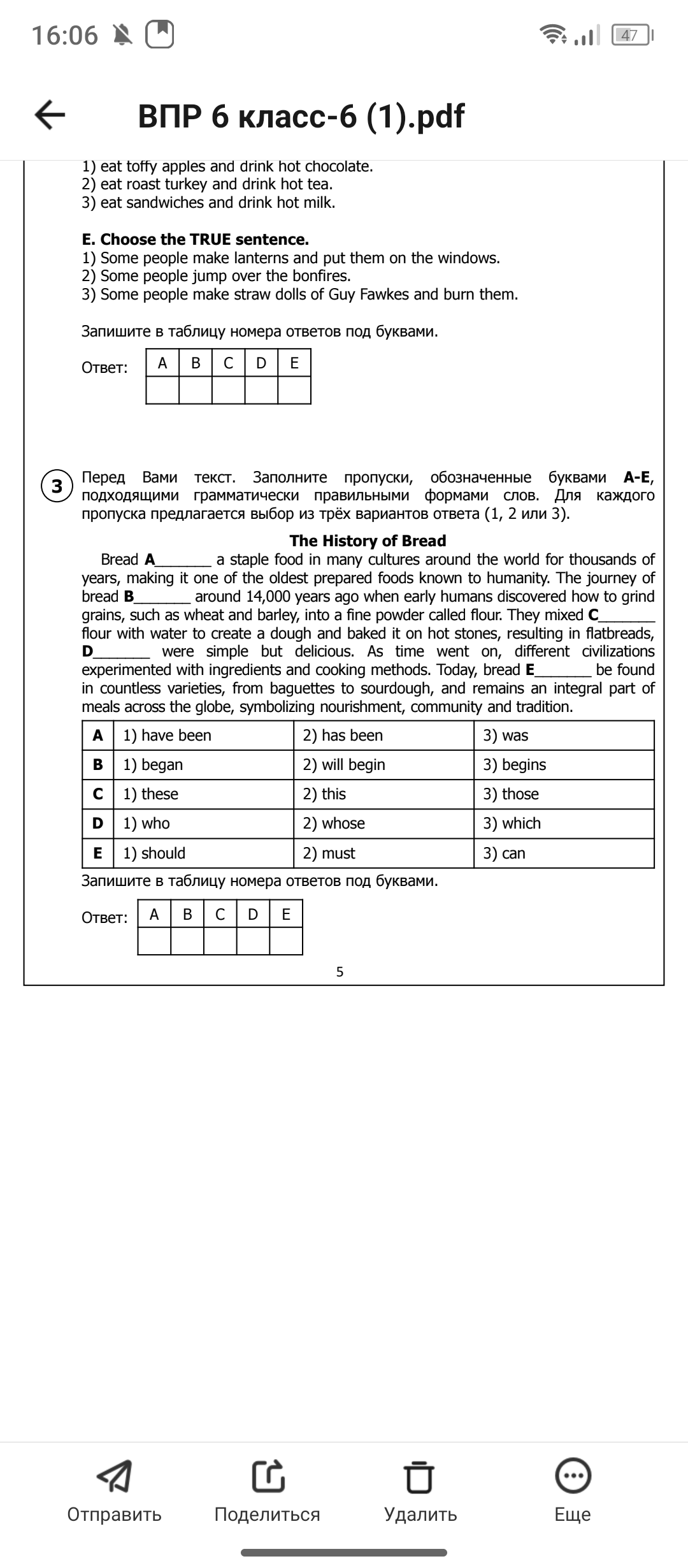
Вопрос:
Заполните пропуски, обозначенные буквами А-Е, подходящими грамматически правильными формами слов. Для каждого пропуска предлагается выбор из трёх вариантов ответа (1, 2 или 3). **The History of Bread** Bread A ________ a staple food in many cultures around the world for thousands of years, making it one of the oldest prepared foods known to humanity. The journey of bread B ________ around 14,000 years ago when early humans discovered how to grind grains, such as wheat and barley, into a fine powder called flour. They mixed C ________ flour with water to create a dough and baked it on hot stones, resulting in flatbreads, D ________ were simple but delicious. As time went on, different civilizations experimented with ingredients and cooking methods. Today, bread E ________ be found in countless varieties, from baguettes to sourdough, and remains an integral part of meals across the globe, symbolizing nourishment, community and tradition. A 1) have been 2) has been 3) was B 1) began 2) will begin 3) begins C 1) these 2) this 3) those D 1) who 2) whose 3) which E 1) should 2) must 3) can
Ответ:
Here are the correct answers for each gap in the text with explanations:
* **A:** The correct answer is **2) has been**. The sentence needs a singular verb because 'bread' is singular and the time frame is continuous. 'Was' is not correct because it implies the bread is no longer a staple food.
* **B:** The correct answer is **1) began**. The sentence describes a past action, the beginning of bread making. Therefore the simple past tense is used.
* **C:** The correct answer is **2) this**. We need singular word because 'flour' is uncountable singular noun. 'These' is plural.
* **D:** The correct answer is **3) which**. The word 'flatbreads' refers to a object, and we need a connecting word for clause. 'Who' is for people, 'whose' refers to possession.
* **E:** The correct answer is **3) can**. The context describes the possibility to find bread, so 'can' is used.
**Summary of Answers**:
* A: 2
* B: 1
* C: 2
* D: 3
* E: 3